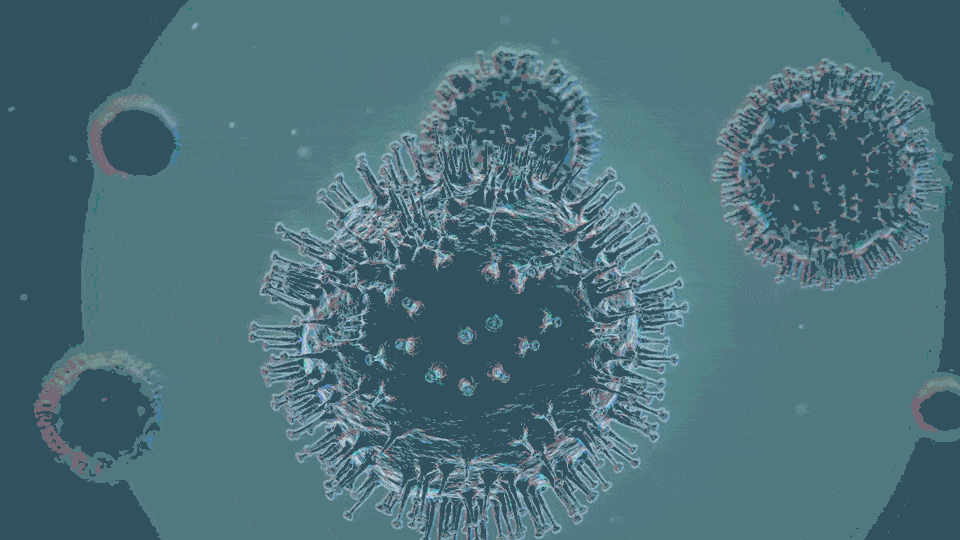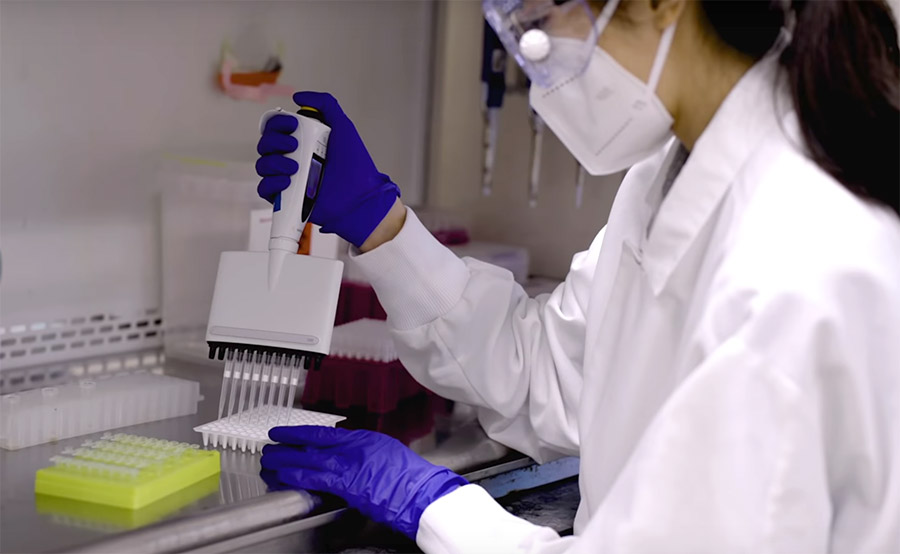Manpower and manholes: Alm lab joins fight against Covid-19
Shelby Doyle, PhD | Center for Microbiome Informatics and Therapeutics
The laboratory of CMIT Co-Director Dr. Eric Alm has a long history of applying microbiome analytics to matters of both personal and public health decision making. When the Covid-19 pandemic was declared, both current and former members of the Alm lab jumped into action to help communities stay ahead of local case surges.
Lending a hand in a time of crisis
By March 13th, 2020, many of our researchers had powered down their lab equipment, not knowing when they would be at the bench again. But some, like Dr. Katya Moniz, Research Lead in the Alm lab, were quickly back on campus, lending a hand to overcome the supply chain shortages brought on by the pandemic.
Researchers like Moniz joined together to source personal protective equipment (PPE) for medical and long-term care facilities in New England. Through her involvement in the MIT Covid-19 Policy Alliance, Moniz helped secure, vet and airlift necessary supplies to communities in MA, NH and ME.
Further, she worked with the Alliance to provide local nursing homes clinical test kits for SARS-CoV-2, the virus that causes Covid-19, when commercial kits were unavailable. Moniz sourced alternative supplies and led a small team at the BioMicro Center to assemble thousands of kits on campus. Moniz was gratified to see these kits “stop the spread before it started in local nursing homes” by catching several dozen asymptomatic cases in these vulnerable communities.

All hands on deck to track community cases
As we learned more about Covid-19, it became clear that widespread testing was key to containment. However, scaling clinical testing in the U.S. quickly and equitably posed a great challenge. That’s when current Alm lab members and Alm lab alumni in the private sector joined forces, turning to the sewars to monitor the spread of SARS-CoV-2.
It may seem strange, but when it comes to public health, wastewater is far from waste. By analyzing sewage samples with the ‘omics technologies used to analyze individual stool samples, community-level insights can be gained. Eating habits, genetic tendencies, drug consumption, contagious diseases, and more can all be monitored at the community level through the sewage system.
As a PhD student studying with Dr. Alm, Dr. Mariana Matus launched and led the MIT Underworlds Project to use wastewater surveillance as a more equitable, real-time indicator of public health. By sampling throughout the sewage network in the city instead of at regional water-treatment plants, this effort demonstrated that wastewater surveillance approaches can provide public health metrics with neighborhood-level specificity.
The success of Underworlds led Matus to co-found Biobot Analytics with Newsha Ghaeli, the first company in the world to commercialize data from sewage. Collaborations between Biobot, the Alm lab, and community partners around the world have continued to refine methods for turning wastewater data into public health metrics.
For example, to monitor typhoid fever in Kathmandu, Nepal, researchers used genomic technologies to detect the microbe that causes it (Salmonella Typhi). But how do bacterial counts correlate to community infection rates? And how does sewer flooding from heavy rainfall deflate bacterial measurements? With an engineer’s approach, the researchers defined a mathematical function to produce accurate infection rate estimates, rain or shine, by simultaneously calculating a proxy for the number of individauls captured in the reading: the diversity of human gut microbes in a sample.

When the pandemic was declared, Biobot and Alm lab members, including researchers at SMART (Singapore-MIT Alliance for Research and Technology), teamed up to rapidly apply their knowledge and infrastructure to monitor SARS-CoV-2. Because a person with COVID-19 will shed the virus within their stool, researchers can identify and measure the viral RNA in wastewater samples using similar genomic approaches used to moniter disease-causing bacteria.
Led by post-doctoral scholar Dr. Fuqing Wu and BE graduate student Amy Xiao, this group used a harmless virus that infects the peppers we eat (PMMoV) as the internal standard for wastewater detection of SARS-CoV-2. And they developed a simple way to use these PMMoV measurements to calibrate for day-to-day variations in the sewer flow rates and estimate community case loads. These early efforts were important for showing case rates were higher in our communities than we knew from clinical testing at the time and that spikes in wastewater virus detection preempt case testing data by 4-10 days.
Now a year into the pandemic, Biobot has leveraged these approaches to support 43 states and provinces in the U.S. and Canada, providing the equivalent of 442 million clinical tests. For their contribution to government responses to Covid-19, Biobot has been selected by the U.S. Department of Human Health and Services to establish a national wastewater-based disease monitoring program.
Steering MIT towards a safe and healthy return to campus
At the same time that wastewater surveillance for SARS-CoV-2 was ramping up off-campus, MIT was working to deploy this approach on campus, too, with leadership from Moinz and the Alm Lab.
The MIT wastewater testing program is a collaboration between the Alm lab and several MIT campus organizations: MIT Facilities, Medical, and Housing and Residential Services. In a project that will run through the fall semester, wastewater from seven buildings on campus will be tested each day for SARS-CoV-2, the virus that causes Covid-19.
The project is designed to determine if wastewater testing can be an effective early warning system for Covid-19 outbreaks on campus, and is being evaluated as a complementary tool to the Institute’s current monitoring infrastructure, such as clinical testing and contact tracing. Moniz says that the role wastewater surveillance data will play in campus policy is yet unclear, but we know the approach is working. She shares, “In the dorms, true positives are well captured—we are able to pick up single infections in a building.”
Applying Mind and Hand can influence the heart
The influence of wastewater surveillance on the course of the pandemic will take time to understand. But the impact this experience has had on the MIT trainees leading these projects is already clear. When asked how their involvement in this project has shaped their understanding of what role a scientific career can play in the world, their answers were both sincere and profound.
Xiao says when she was trying to decide what to work on for her PhD, “there [was] so much cool stuff going on—I [didn’t] know which thing I want[ed] to focus on.” She adds she wasn’t sure what her career goals were, either, saying, “I want[ed] to be a professor—do research and teach. But I really do enjoy seeing the things that I work on in the lab be more immediately impactful.” The pandemic made it clear which project was the most important. And the experience has shown she doesn’t have to choose between scholarship and impact—Xiao’s already shown she can do both.

For Wu, this applied research experience has changed the way he sees himself and the impact he can make with his basic science training. As a graduate student Wu was glad to work on something that interested him: viruses. But when Wu was only studying the details, like the mechanisms that allow a virus to move throughout a cell, it was easy for him to devalue his work. Now, leveraging his knowledge and skills to help keep us all safe, Wu says, “I feel like I’m doing something really useful to the community. I’m really glad I did this work.”
The laboratory of Dr. Eric Alm is supported by CMIT, MIT’s microbiome center. For more information about Biobot Analytics, please visit their website. The work described here benefited from a highly collaborative, international team including Dr. Janelle Thompson, CMIT Investigator Dr. Richard Bonneau, Dr. William Hanage, Dr. Kyle Bibby and the many other co-authors credited in the academic publications regarding this work.

